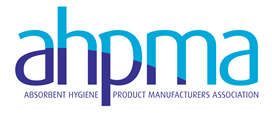Absorbent Continence Care
It is estimated that over 14 million people live with bowel control problems. This includes adults, young people and children. Despite the number of people affected, there is a lack of awareness and understanding which prevents people from seeking help. Bladder or bowel weakness can inhibit day to day activities and quality of life. It may lead to additional dependency on carers, or even result in admission to residential care.
Anyone with bladder or bowel weakness should consult their doctor for expert help and, where appropriate, referral to a specialist continence care team for assessment, treatment, further referral or advice on which products to use. There is a high success rate for treating bladder weakness, and many other symptoms or conditions can be resolved or greatly improved.
Disposable absorbent continence products are designed to help people who need to rely on them either temporarily or permanently to manage bladder and bowel weakness in the most comfortable, hygienic and efficient way. Products have a waterproof backsheet (this can be polyethylene, breathable or textile) and a one-way top sheet. The core of the product contains materials which rapidly absorb and lock urine away. These aspects perform important functions that prevent prolonged contact with urine which can lead to skin damage or rash. It is important for skin to be kept clean and dry, and for the most appropriate absorbency and type of product to be used.
A wide range of continence products are available to suit differing needs and can be purchased from retailers, on-line stores or direct from some manufacturers. A proportion of people who are diagnosed as having a need for continence care products may receive a supply via the NHS, although this is determined by individual NHS Trusts.
Manufacturers have advice lines for consumers, carers and health professionals. There are also several independent resources available:
- The International Continence Society has produced a guide to help people understand the various product types: www.continenceproductadvisor.org
- Bladder and Bowel UK has a specialist helpline for all ages which can be used by people with bladder issues or their carers: www.bbuk.org.uk
- ERIC is a specialist resource for children, young people and their carers: www.eric.org.uk
In 2005 AHPMA, along with a panel of senior clinical experts and academics, began a combined campaign to highlight the need for greater priority for continence care services. In 2009 The All Party Parliamentary Group for Continence Care (APPG) was formed, since then AHPMA has provided secretariat and support. The work of the APPG led to the development of a specialist continence board at NHS England and the publication of national guidance for healthcare commissioners titled ‘Excellence in Continence Care.’
The APPG has produced several publications and reports. These and other related documents can be found here on the APPG website: www.appgcontinence.org.uk
Flammability Safety Advice
Products such as absorbent continence products may ignite if they are exposed to a flame or heat source such as a lit cigarette, halogen lamp, or bar heater for example. This can occur whether they are worn or still in packaging. Products can also add fuel to a developing fire. We recommend following the advice of the London Fire Brigade with regard to safe use and storage. London Fire Brigade fire safety advice for users of healthcare products and equipment can be found here
In the UK, continence care products are regulated and produced according to the Medical Devices Directive (MDD) and the incoming Medical Device Regulations (MDR.) There is currently a transition period between the two; the MDD will be replaced by the MDR which covers continence products in 2020. Click to view each:
Medical Devices Directive
Medical Devices Regulations
View & Download
the Pelvic Floor Report 2021
View & Download
the Colley Model Urinary Continence Assessment Tool
Download
the NHS England 2018 Excellence in Continence Care
Download
the APPG report Cost-Effective Commissioning Guide for Continence Care
Download
the APPG 2013 Continence Care Services Report
Download
Guidance for the Provision of Continence Containment Products to Children
View & Download
Guidance for the NHS and Health Care Providers on Appropriate Testing of Disposable Incontinence Products Document
View & Download
Product Information for the NHS and Care Providers on Disposable Absorbent Continence Products
Correct Disposal
Continence products should never be flushed down a toilet. Used products should always be placed in a bin or appropriate disposal unit. Manufacturers’ on-pack disposal advice should be followed.
